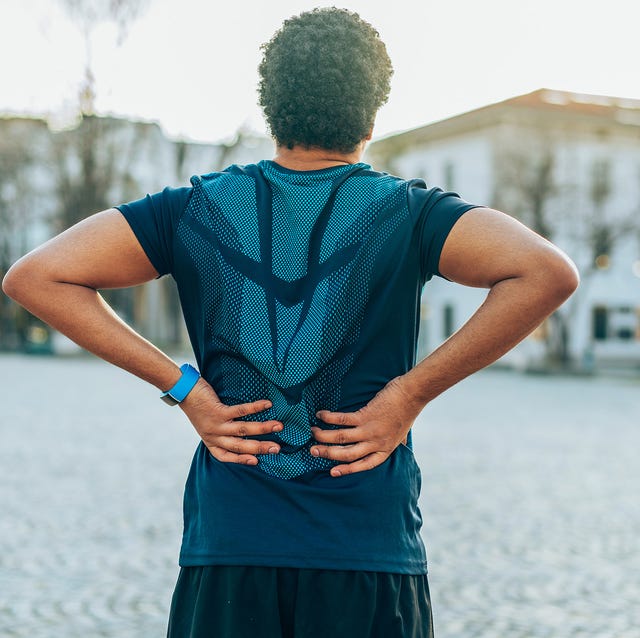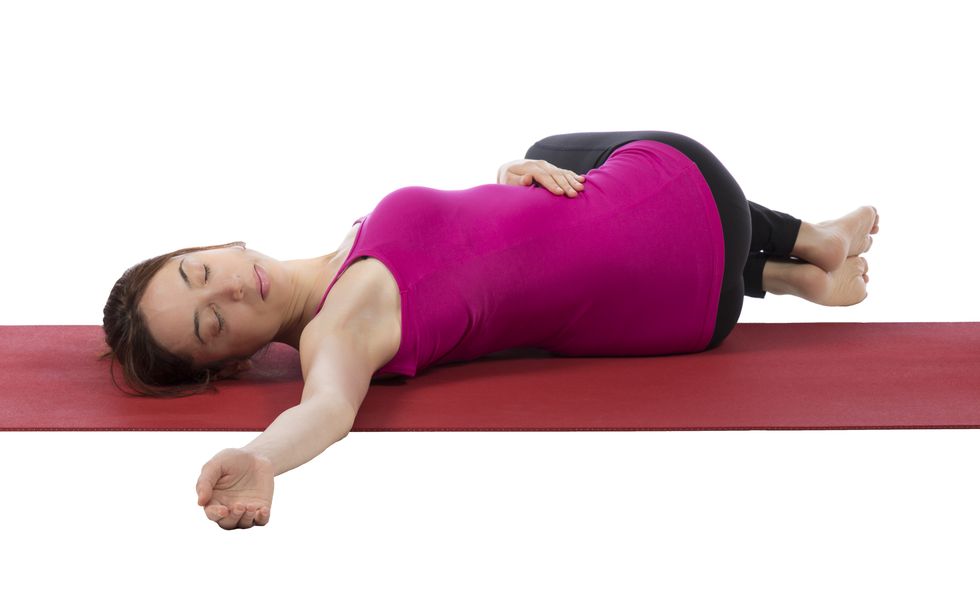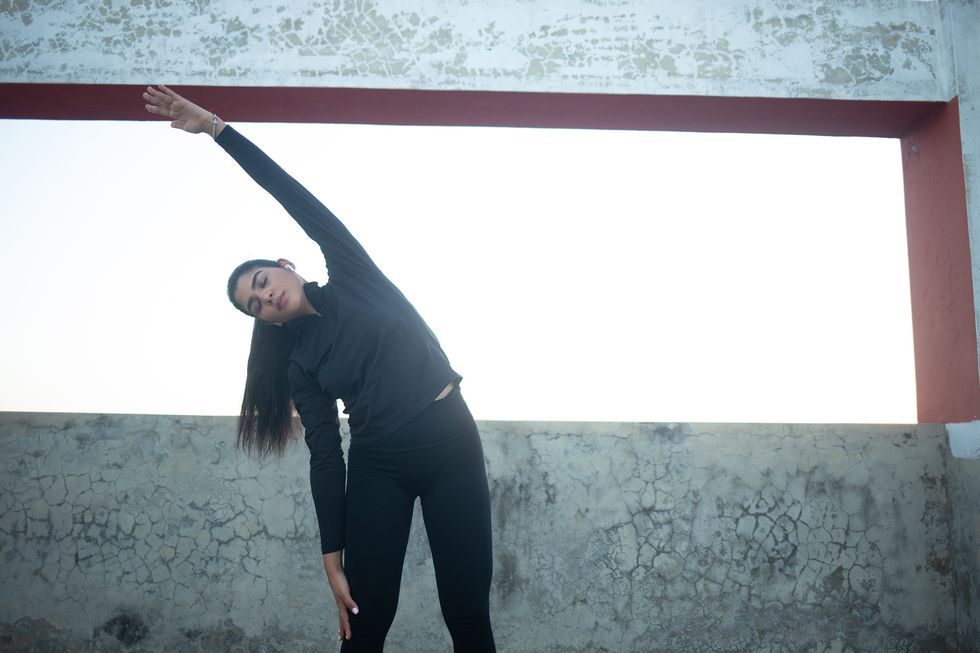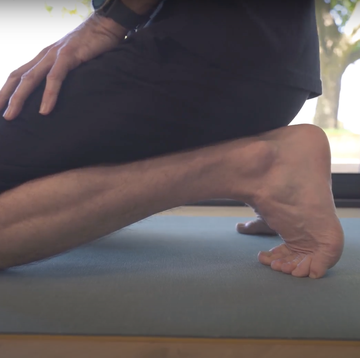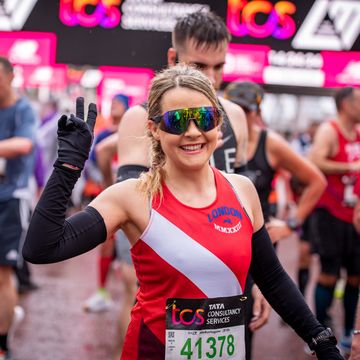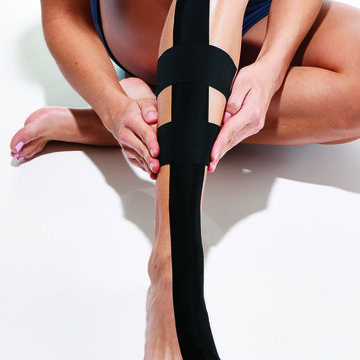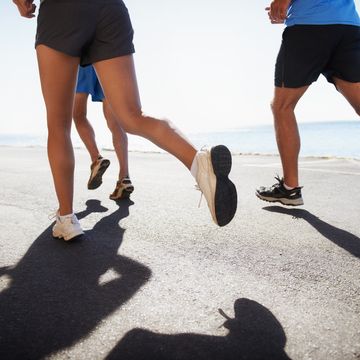Lower back pain from running – what causes it, how to treat it and how to prevent it
Chartered physiotherapist Matt Bergin share five causes of lower back pain from running and how to treat them
Lower back injuries are one of the most common issues we see in the clinic – and not necessarily just among runners. Long periods of sitting, driving and the repetitive, static nature of most of our jobs is not conducive to building strong and supple lower backs.
In runners, control around the lower back and pelvis is crucial. Think of them as the foundations of a house – weak, unstable foundations and everything on top won’t work well. Lack of strength, control and stability around these areas will not only cause local issues – like lower back pain when running – but be the driver for common overuse injuries, such as achilles tendinopathy, runner's knee and various foot injuries.
However, lower back pain from running can be triggered by a number of causes, so it's important to get the correct diagnosis. Here, physiotherapist Matt Bergin of Witty, Pask & Buckingham Chartered Physiotherapists talks through five of the most common causes and how to treat them.
What causes lower back pain from running?
1. Muscular
Muscular back pain is probably the most common of the lower back injuries. Typically, there is a moment of injury, that ‘ouch’ moment where you remember a sharp spasming of the lower back muscle on one side. These injuries aren’t always the result of big heavy lifting but often occur in positions of combined bending, twisting and side-bending to perform what often seem like a simple task – such as leaning to grab something off the floor.
Your lower back muscles (aka the paraspinal muscles) run either side of your spine. When working together they keep you up tall when walking and running. When acting in isolation on either side, they work together with your stabilising hip muscles, on the opposite side to control movement at the pelvis.
If you're repeatedly experiencing lower back pain from running but there hasn’t necessarily been a specific moment of injury, it could be due to an underlying weakness in the lower back and gluteal muscles causing repeated overload and tightening.
Symptoms
- Spasm type feeling initially in the lower back where everything suddenly tightens. Typically one-sided but not always.
- Sharp pain initially that becomes a duller background ache.
- Rarely get referred symptoms into the legs, but may get some into the gluteal muscles.
- Pain to stretch away from the side of discomfort.
- Localised tender spot.
How to treat it
- Dynamic rest. Although you might want to do nothing but lay flat for days, restrict this where possible. Keep moving gently.
- Gentle stretches. Once the real acute pain has subsided.
- Heat. The overactive muscles will like the warmth, whether that’s a hot water bottle or a warm bath.
- Gentle massage. This may help overactive muscles at first but don't spend hours pummelling the tissues with a massage gun.
- Strengthen. This is particularly important if you're a repeat offender. Often muscles become overactive and feel ‘tight’ because they are in fact weak and unable to cope with what we are asking of them. Abdominal, lower back and gluteal strengthening exercises are where the focus should be, and especially single-sided tasks, such as side planks. Scroll to the bottom of the article for strength exercises to try at home.
2. Facet joints
Your facet joints are the joints of the spine that sit between the adjoining spinal segments above and below – you have a joint on each side. The angle at which these facet joints sits determines the movements that occur at these segments – the lower back mostly allows forward or backward bending plus some side-bending and twisting while the upper back allows more rotation and side-bending.
When we run these joints are, overtime, exposed to large forces and stresses. Being strong enough in the lower back, abdominal and gluteal muscles is essential to provide support and stability to these joints. Imagine your trunk muscles as a corset that wraps around the spine providing it with support.
Symptoms
- Lower back pain which is irritated by leaning backwards.
- Downhill running can often make things worse.
- Prolonged standing can bring on symptoms.
- Some referral into the buttock area is normal.
How to treat it
- Heat, relaxation, and very gentle movements. Like the muscular lower back injuries, with a facet joint issue you will likely have a localised area of spasm in the lower back muscles, especially over the problematic joint. Heat, relaxation and very gentle movements are the best course of action at first.
- ‘Open out’ the facet joints. Once the initial spasm and acuteness subsides, a combination of flexion (bending forwards) and rotation type stretches is best to ‘open out’ the facet joints and create a bit more space between them. This should help to ease your symptoms. Great exercises for this are child’s pose stretch and knee hugs.
- Strengthen. The abdominal muscles and gluteal muscles (especially gluteus maximus) help to control your lower back and pelvic position when running. Weakness through either (or both) will tend to result in your lower back excessively arching and your pelvis tipping forwards, both of which compress the facet joints in the lower back. Exercises such as glute bridges, hip thrusts and deadbugs are a good start (scroll to the bottom of the article to find out how to do these and others) – but the focus should be on controlling the position of the lower back and pelvis throughout the movement. These exercises should only be initiated once you have full pain-free movement in your lower back.
3. Sacroiliac joint
Your sacroiliac joints sit between your left and right ilium (pelvic) bones and the central sacrum. These joints aren't nice and congruent like the ball and socket of the hip joints, but rather uneven ‘c-shaped’ joints that have the role of providing stability and transferring load and forces through the body as we move. The stability at this joint comes from the large network of fibrous ligaments and muscles that attach to and from it.
Symptoms
- Tightness and soreness. Lower back soreness or a vague tightness through the upper hamstring or deep into the glutes. Or a combination of all three.
- There is rarely a moment you can remember having caused the injury.
- You may experience a laziness to the leg, or that you are dragging your leg when you run. A lack of power when running is also a common complaint among runners with this injury.
How to treat it
- Self-release of the muscles. This is a must – especially when it comes to releasing the deep gluteal muscles. You can do this by using a massage ball to release the piriformis – a small, pyramid-shaped muscle found in the hip, connecting the front of the sacrum (the base of the spine) to the top of the femur (thigh bone). Simply get a massage or tennis ball, sit on it and really lean into the piriformis.
- Mobilisation to the joint. This can also be done both by your physiotherapist and yourself at home – a physiotherapist should will be able to show you how to do this.
- Strengthen the muscles that aid stability across the joint. The two main groups of muscles that work together to provide stability across the joint are the gluteal muscles and the abdominal (trunk) muscles. These muscles help to control and restrict excessive movement, especially excessive and uncontrolled arching through the lower back, dropping down of the pelvis on one side and trunk rotation. Scroll to the bottom of the article for the best exercises to improve strength in the lower back and trunk muscles.
4. Discs
The discs are the spongy cushions that sit between your adjoining vertebra in your back. They are fibrous on the outside and jelly-like on the inside, however as we age they tend to lose their sponginess, becoming thinner and more fibrotic. Contrary to popular belief, discs do not slip out of place, however when a disc becomes injured a bulge will often develop. Think about squeezing a water balloon and the bulge you get from doing this... it's a similar thing. In some instances, this bulge may turn into a leak, with the fluid leaking from within the disc. In both these conditions you will often experience referred symptoms into your legs, this is the disc pressing on, and irritating, the sciatic nerve of the lower back.
If you are experiencing back pain and/or leg pain and have also experienced changes in your bladder and bowel control and/or a lack of sensation in the saddle area, you must seek immediate medical advice or visit A&E for further investigations.
Symptoms
- Lower back pain that is typically worse bending forwards. Or while being sat for long periods as well as standing up from sitting.
- Pins and needles, or numbness, tingling and weakness in the lower limbs.
- Painful to cough and sneeze.
How to treat it
- Initial rest and heat. If you have suffered an acute disc bulge, initial rest is best. Avoid aggravating activities but keep moving where possible. You will also often get an increase in tone in the surrounding muscles – these will like heat.
- Gentle stretches, once the acute phase has settled – especially into extension (arching backwards) and rotation but be gentle with these initially. A great stretch for this is cobra pose, where you lay on your front and gently lift your chest off the floor using your forearms. Rotational stretches of the lower back can also be effective once the initial pain subsides.
- Strengthen. As we get older we naturally become less supple and it’s harder to maintain our muscle mass – this requires regular strength and resistance type training. Working on the gluteal, lower back and abdominal muscles should be the focus – Pilates can be great for this. Regular mobility type exercises are hugely beneficial, especially if you are someone that spends hours slumped over your laptop.
5. Nerves
The nerves of the lower limbs originate from the lower back (aka lumbar spine) with the most common being the sciatic nerve. The sciatic nerve has lots of little branches that weave and wind their way down the leg, supplying different groups of muscles and different areas of skin. Irritation of this nerve at its root, or as it exits the spine, will likely give you symptoms down the leg, whether that be the whole leg or in quite specific patches, depending on which part of the nerve you have upset.
The term ‘sciatica’ simply describes this resulting nerve pain down the leg. Unfortunately, it doesn’t necessarily tell us what is causing it – is it the disc, or the facet joint? Or is it the piriformis muscle? Until this has been determined and resolved the symptoms will likely linger.
Symptoms
- Nerves often give an array of different symptoms, including pins and needles, tingling, numbness, burning sensations, weakness and just a general achy type feeling down the whole limb.
- Typically, the more irritated the nerve, the more obvious the symptoms – for example a significant, acute disc bulge that is pressing heavily on the nerve might give a real aggressive, constant burning sensation down the leg, whereas a disc bulge that is well on its way to resolving may only give intermittent tingling in the outer calf area after long periods of sitting.
How to treat it
- Work on the function of the nerves. Once the source of the nerve symptoms has been resolved, you can then work on the function of the nerve, which involves ensuring the nerves are smoothly ‘sliding’ and ‘gliding’ around the structures located nearby – any tightness in a muscle, or stiffness in a joint around a nerve can impact its function! By performing some neural mobility type exercises we can help restore this ‘slide and glide’ and overall function. Here’s a good example of a neural mobility exercise which can you try at home.
Slump slider
- Sit on the edge of a table or worktop, with your legs hanging.
- Place your hands in the small of your lower back, drop your chin down to your chest and slump slightly from the upper back.
- Once in this position, point the toes away from you and straighten the affected leg.
- Once in this position point the toes towards you and simultaneously look up – you may feel a bit of a pull down the back of the leg or into the gluteal region but it should be relatively pain free.
- Repeat this 15-20 times, perform two to three times daily.
- NB: Nerves to not like to be stretched too aggressively so do not be tempted to really push this one into a deep stretch as it may irritated things further.

Chartered Physiotherapist
Matt is an international middle-distance runner with a keen interest in running-related injuries, rehabilitation and prehabilitation.

Help! I have plantar fasciitis so bad I can't walk
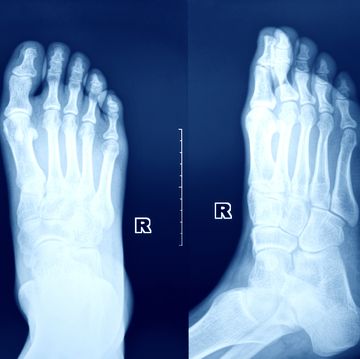
Everything you need to know about stress fractures
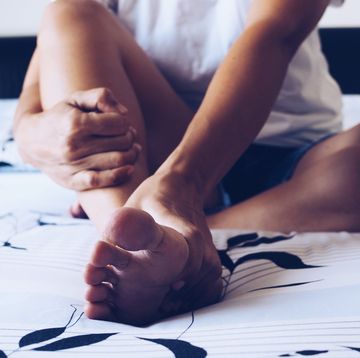
All you need to know about treating foot arch pain

What is a healthy heart rate when running?
